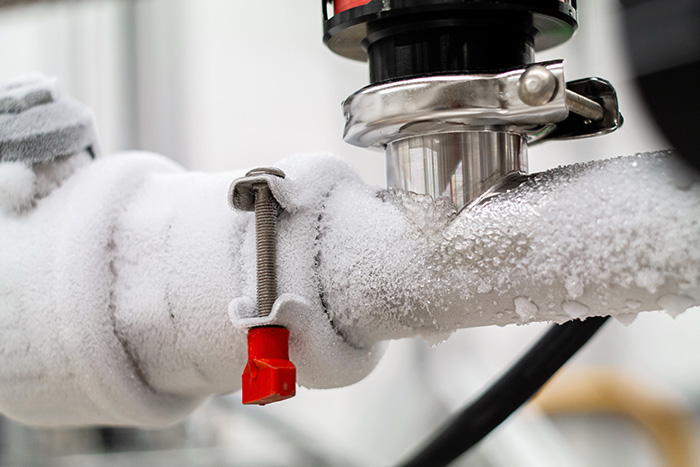Important Tips to Prevent Frozen Plumbing in Cold Weather
Important Tips to Prevent Frozen Plumbing in Cold Weather
Blog Article
Here underneath you will discover lots of really good tips regarding How to Prevent Your Pipes From Freezing.

Winter can ruin your pipes, specifically by freezing pipelines. Here's how to prevent it from happening and what to do if it does.
Intro
As temperature levels decrease, the danger of frozen pipelines boosts, potentially bring about pricey repair services and water damage. Recognizing exactly how to prevent icy pipes is essential for homeowners in cold environments.
Prevention Tips
Shielding prone pipelines
Wrap pipelines in insulation sleeves or utilize warmth tape to safeguard them from freezing temperature levels. Focus on pipelines in unheated or exterior locations of the home.
Home heating techniques
Maintain indoor spaces effectively heated, specifically locations with pipes. Open up closet doors to permit cozy air to flow around pipelines under sinks.
Exactly how to determine frozen pipes
Look for lowered water circulation from taps, unusual smells or noises from pipes, and noticeable frost on revealed pipelines.
Long-Term Solutions
Structural adjustments
Take into consideration rerouting pipelines away from outside wall surfaces or unheated locations. Add added insulation to attic rooms, basements, and crawl spaces.
Updating insulation
Invest in premium insulation for pipes, attics, and walls. Proper insulation helps maintain constant temperature levels and decreases the risk of icy pipes.
Shielding Outside Plumbing
Yard hoses and outside faucets
Separate and drain yard hoses prior to winter season. Mount frost-proof spigots or cover outside taps with insulated caps.
Comprehending Icy Pipes
What triggers pipelines to ice up?
Pipes freeze when revealed to temperatures below 32 ° F (0 ° C) for prolonged durations. As water inside the pipes ices up, it broadens, taxing the pipeline walls and potentially triggering them to rupture.
Dangers and problems
Icy pipelines can cause water supply disruptions, residential property damages, and pricey fixings. Ruptured pipelines can flood homes and trigger comprehensive structural damages.
Indications of Frozen Pipeline
Identifying frozen pipelines early can avoid them from bursting.
What to Do If Your Pipelines Freeze
Immediate activities to take
If you think frozen pipelines, keep taps open to soothe pressure as the ice melts. Utilize a hairdryer or towels soaked in warm water to thaw pipes gradually.
Final thought
Preventing icy pipes needs proactive measures and fast responses. By comprehending the reasons, indications, and preventive measures, homeowners can protect their plumbing throughout winter.
5 Ways to Prevent Frozen Pipes
Drain Outdoor Faucets and Disconnect Hoses
First, close the shut-off valve that controls the flow of water in the pipe to your outdoor faucet. Then, head outside to disconnect and drain your hose and open the outdoor faucet to allow the water to completely drain out of the line. Turn off the faucet when done. Finally, head back to the shut-off valve and drain the remaining water inside the pipe into a bucket or container. Additionally, if you have a home irrigation system, you should consider hiring an expert to clear the system of water each year.
Insulate Pipes
One of the best and most cost-effective methods for preventing frozen water pipes is to wrap your pipes with insulation. This is especially important for areas in your home that aren’t exposed to heat, such as an attic. We suggest using foam sleeves, which can typically be found at your local hardware store.
Keep Heat Running at 65
Your pipes are located inside your walls, and the temperature there is much colder than the rest of the house. To prevent your pipes from freezing, The Insurance Information Institute suggests that you keep your home heated to at least 65 degrees, even when traveling. You may want to invest in smart devices that can keep an eye on the temperature in your home while you’re away.
Leave Water Dripping
Moving water — even a small trickle — can prevent ice from forming inside your pipes. When freezing temps are imminent, start a drip of water from all faucets that serve exposed pipes. Leaving a few faucets running will also help relieve pressure inside the pipes and help prevent a rupture if the water inside freezes.
Open Cupboard Doors
Warm your kitchen and bathroom pipes by opening cupboards and vanities. You should also leave your interior doors ajar to help warm air circulate evenly throughout your home.

We had been shown that write-up about How to prepare your home plumbing for winter weather through a friend on a different web page. Those who liked our blog post if you please remember to pass it around. Thank you for being here. Revisit us soon.
Contact Us Today Report this page